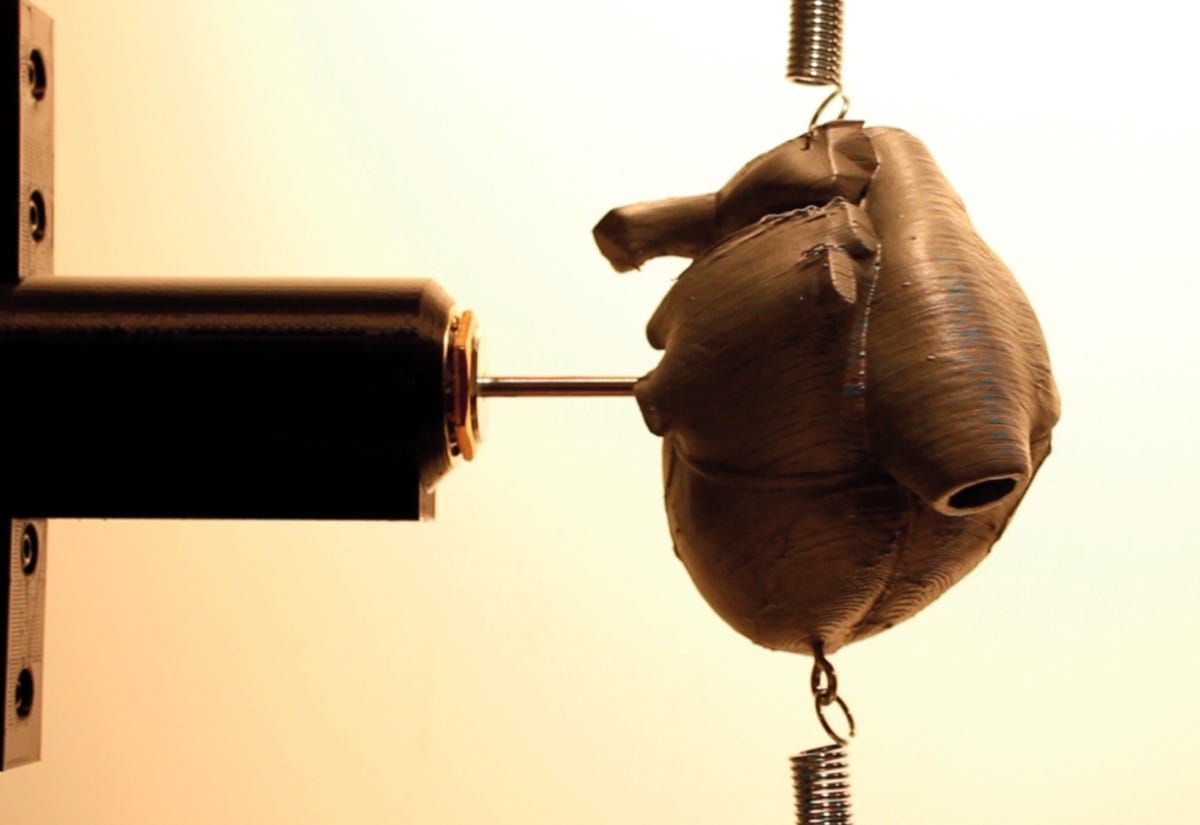Future-tech expo: Sci-fi saxes, 3D-printed human hearts (pictures)
Project yourself into a virtual music studio or control sound with the movement of your hand. The CalArts Digital Arts and Technology Expo highlights creative visions for the future of gaming, music, and more.

Kontrol
Imagine controlling the music you're dancing to with a sweep of the hand. That's one vision for Kontrol, a new wearable interface by CalArts students Jon He and Kameron Christopher that would, among other uses, give traditional instrumentalists and dancers more freedom to interact with multimedia during performances.
In addition to being used as a music controller, the system could be used to track musicians' movements and help them improve on their technique. Pictured here with a Guqin -- a seven-stringed plucked instrument that goes back 5,000 years -- Kontrol will be on display Thursday at the California Institute of the Arts Digital Arts and Technology Expo, which highlights student and faculty innovations.
CalArts was founded by Walt Disney in the early 1960s and now is one of the nation's top art schools. The event goes from noon to 10 p.m. on the school's Valencia, Calif., campus. Admission is free, as is this photo gallery showcasing some of the expo's creative highlights.
Kontrol-ing the sax
Designed to be lightweight, the Kontrol features six accelerometers on the left hand that pick up on subtle movements and convey that gestural data to an Arduino Fio microcontroller board that communicates wirelessly with the computer.
"The hand movements of a skilled musician can provide very useful information on what the musician is playing, how they are playing it, and possibly what they intend to do next," the creators of the Kontrol say in their research paper.
A rechargeable battery powers Kontrol, which the creators hope to condense in future iterations. If the idea of controlling music through gestures sounds familiar, you may have seen Imogen Heap's similar magical musical gloves.
The Third Room
In The Third Room, users play music through physical movement. The interactive audio and visual environment projects a virtual video-game-style performance space in front of the user, who then interacts with digital instruments via a Kinect camera. Here, a user waves his hand to create a virtual ball that can be thrown around the virtual space to trigger a custom-made robotic instrument called the Modulet Grid, which hangs above.
CalArts students Colin Honigman and Andrew Walton created The Third Room, with robotics by student Christopher Pheiffer and Ajay Kapur, associate dean for research and development in digital arts.
Floor drumming
Walter the robot
Inspired by robots that can be taken apart to fit into cases for shipping, Perry Cook -- founder of the Princeton University Sound Lab and a permanent visiting artist at CalArts -- created robots that are the cases themselves. The results are portable, battery-powered, wireless, retro-styled robots in cases that have special meaning to Cook's family. This wooden box containing the Walter robot belonged to Walter, the great uncle of Cook's wife.
At Thursday's CalArts expo, Walter the box will play a key role on stage in a robot-conducted performance. The box will start thumping as Cook leaves the stage to get another box (Valice). Walter will thump more aggressively while Cook sets up Valice. More sounds will enter the mix as Walter, the lead bot, triggers synced laptops. During the performance, Walter will cue handheld robotic instruments in the audience.
Metal Heart

Aluminum heartbeat
Raphael Arar's art piece, Metal Heart, will beat Thursday at CalArts Digital Arts and Technology Expo, which this year points to possible future directions in gaming, animation, human computer interaction, digital performance, graphic design, projection mapping, and machine learning.
Turntable Synthesizer
Groovy projection
The Turntable Synthesizer would have been a big hit at parties in the '60s.

